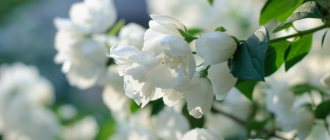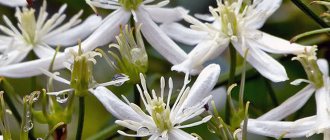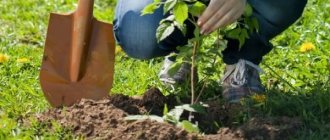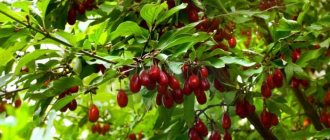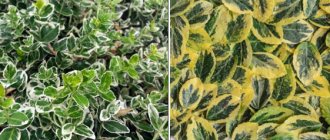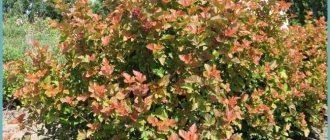When to plant jasmine
Most often, garden jasmine lands on our site in the form of an already grown seedling. You can buy it in nurseries and within a couple of years you can grow a beautiful bush with a lush crown. Seedlings, like other types of plants, can be planted in spring or before winter. It is important to plant in a timely manner, taking into account the local climate, namely:
- in spring, jasmine can be planted no earlier than the end of April - beginning of May, when the return frosts have passed and the soil has warmed up;
- before winter, seedlings should be planted no later than the end of September, so that they have time to take root and strengthen before the onset of persistent cold weather.
What is special about jasmine?
As soon as the fresh buds open, they produce a large amount of essential oil. It has a beneficial effect on a person's libido. The main parts of the essential oil, such as benzyl acetate, benzene alcohol, jasmone and other ingredients, have one main feature - they restore sexual function in the human body. You can prepare a decoction from jasmine flowers that will help you restore digestive function. It can also easily remove toxins and improve blood circulation. This is, at first glance, an ordinary flowering bush, but it hides many useful functions. Regardless of which varieties of jasmine decorate your garden, they all have healing properties. By planting such a shrub at your dacha, you will get a unique decoration that will guard your health. It’s worth figuring out how to plant jasmine in the spring and why it should be done at this time of year. But first, it’s worth considering the available varieties of this magnificent flowering shrub.
Timing for planting jasmine seeds, layering and cuttings
If you decide to get planting material yourself, in this case it all depends on the method of propagation. One of the most labor-intensive and time-consuming methods is seed propagation. To avoid fussing with seedlings, jasmine seeds are sown immediately in open ground in late autumn. In the southern regions this can be done in early December. The beds must be prepared before frost by digging and fertilizing them. The seeds, having overwintered and undergone natural stratification, will produce seedlings that are more resistant than those obtained from seedlings in indoor conditions.
Jasmine grown from seeds will bloom only in the 7th year of life.
To obtain layering, young shoots should be buried at the end of summer. In mid-autumn they can be separated and transplanted for growing or to a permanent place.
It is better to divide adult garden jasmine in late autumn or early spring.
As for cuttings, young branches can be harvested and rooted at the beginning of summer. It is better to cut woody shoots in the fall, when the jasmine sheds its leaves. For the winter, the cuttings should be lowered into the cellar, placed in a container with sand. In early spring, chibuki need to be planted in the garden to build up the root system. The seedlings obtained in this way with roots and young shoots are planted in the fall.
Video about growing garden jasmine
The aroma of jasmine is well known from childhood. A wonderful miracle in the parent's garden! A huge spreading bush with star-shaped snow-white and cream flowers attracts with its exotic and sweet smell. No other shrub has such a fragrant and pronounced aroma. The article will tell you how to grow jasmine in your garden.
Content:
In Latin, mock orange sounds like Philadelphus. The plant is named after Cleopatra's son, Ptolemy Philadelphus. All his life he loved fragrant flowers and incense. And people call it mock orange. In the distant past, a smoking pipe was made from twig-like straight shoots, part of which is called “chubuk”. The wood of the bush is hard, so it is used to make flutes, pipes and other crafts.
Jasmine planting and care
To grow a beautiful and neat plant, you should know and follow certain agricultural techniques.
- The plant tolerates shade, so it can grow both in shaded areas and in the sun. Planted jasmine in a well-lit place will bloom more abundantly and develop quickly.
- Planting jasmine seedlings can be done in autumn or early spring. These periods are favorable for the rooting and development of young plants.
Soil for planting garden jasmine
- Jasmine is not picky about the soil, but it can only reveal itself in all its glory on fertile soil. The shrub does not tolerate stagnant water, so it must be planted in a high area or by making preliminary drainage from crushed stone with sand, broken brick or gravel. The layer height must be at least 15 cm.
- For a seedling, you need to dig a hole 50 cm deep, fill it with fertile soil and add 30 g of nitrophoska. When planting, you need to ensure that the root system is not buried more than 3 cm into the soil. The soil around the seedling is compacted and watered abundantly.
Feeding jasmine bushes
- Feeding mock orange bushes begins a year after planting.
- Mineral fertilizers . For 10 liters of water you will need: superphosphate – 30 g; urea – 15 g; potassium sulphide - 15 g. All ingredients are stirred in a bucket of water and the contents are poured under 1-2 jasmine bushes. Faded shrubs should be fed by adding 15 g of potassium and 20 g of superphosphate to the soil.
- Organic fertilizers . Slurry has proven itself well. To prevent the plant from getting burned, organic fertilizer is diluted with water in a ratio of 1:10. It is recommended to carry out this feeding once a year. You can use birch or apple ash, embedding it in the soil under the jasmine. For one bush, it is enough to take 100 g of fertilizer.
Formation of a jasmine bush and anti-aging pruning
Often, tall varieties of garden jasmine acquire an asymmetrical shape, which is associated with different growth rates of the plant. To make it more neat, regular formative pruning will be required.
- You can give jasmine a beautiful look during the growing season. At the beginning of spring, when it becomes warm, it is necessary to trim long branches a little, and shorten weak ones by half. This procedure will enhance the active growth of young shoots.
- Over time, the bush grows, the branches become bare and choke the plant. Without a doubt, such a look does not decorate jasmine. Anti-aging pruning is required .
General characteristics of the shrub
The habitat of true jasmine is the Mediterranean, where the climate is mild and humid. The climatic conditions of central Russia are unfavorable for the plant, therefore in our country jasmine is a greenhouse and indoor species. However, breeders have bred frost-resistant garden jasmine, also called mock orange, specifically for planting in temperate climates.
Today, several varieties and many varieties of shrubs have been developed. When growing it in open ground, you must follow the rules of planting and care, otherwise you should not count on abundant flowering.
Jasmine is a shrub (less often a tree) 3-4 m high. The shoots are elongated and straight. At the end of spring, fragrant flowers bloom at night (but some varieties have almost no scent). As the day comes, the flowers fade and new ones open. Flowering lasts several weeks. The inflorescence includes 5-6 small delicate flowers, usually white, but also yellow or pink.
Jasmine is grown primarily as an ornamental garden crop. Few people know about the medicinal properties of its roots, flowers, and leaves. In folk medicine, remedies for pain, fatigue, the effects of stress, for treating wounds and improving lactation are prepared from a plant saturated with essential oils and organic acids. In cosmetology, the plant extract is used as a component of preparations for problematic, aging, dry skin.
Description of the bush and features of its cultivation
Garden jasmine belongs to the Hydrangeaceae family. With real jasmine, a representative of the Olive family, it is related only by the abundance of snow-white flowers with a similar aroma. The height of this deciduous shrub depends on the variety and can vary from 70 cm (in miniature varieties) to 6 m. Its long, straight branches are covered with gray bark. The ovoid leaves range in size from 2 to 7 cm in length. The inflorescences are racemose, consisting of simple semi-double or double flowers.
There are different types and varieties of jasmine. It is better to choose for planting those that easily adapt to the climate where they will be grown. In Russia, the following types are most popular:
- common jasmine;
- garden climbing jasmine;
- crown jasmine;
- dwarf jasmine;
- Madagascar jasmine (indoor).
In addition to the Madagascar species, jasmine gardenia, which blooms with fragrant white flowers, is often grown at home.
The intensity of the aroma depends on the specific variety of mock orange. Some varieties have a subtle scent, while others emit a strong sweetish aroma. There are shrubs whose smell is reminiscent of berries. For example, jasmine of the Strawberry variety during flowering emits the aroma of the berry of the same name.
Strawberry jasmine variety
For those who decide to plant jasmine, caring for and growing this crop in the garden will not bring any special worries. Experts recommend planting several varieties of mock orange with different flowering periods on the site at once. In this case, it does not matter when the jasmine blooms, in what month, since clouds of white petals will decorate the area from June to August.
Note! Due to the presence of many beneficial components in tissues, jasmine is included in herbal medicinal preparations. Mock orange tea has a tonic and restorative effect, helps treat depression, relieves headaches, muscle pain, and inflammation in the joints.
How to plant jasmine in spring? Planting shrubs in the country
Probably many people have heard about jasmine in their lives. This flower mainly decorates the windowsills of apartments and houses. But this shrub loves to grow in the wild. In particular, many gardeners grow it on their plots. It happens that some people confuse jasmine and mock orange. Plant care is the same, but there are differences in appearance and origin. The first one has much larger and more fragrant flowers. So, let's look at how to plant jasmine in the spring, and also learn all the intricacies of caring for it.
Jasmine: how to plant and care
If a summer resident decides to plant jasmine, the bush can be rooted both in spring and autumn. According to experts, autumn planting is preferable. The place does not have to be sunny; mock orange tolerates shade well. He also does not make any special demands on the composition of the soil. The shrub can easily tolerate drought, but flowering in this case will be weak.
If you plant jasmine in a well-lit fertile area and regularly moisten it, the flowers will bloom one after another, resembling a lush cloud with their snow-white mass. For planting, it is better to choose a clear, windless day in late September or early October. At the bottom of a planting hole with a diameter and depth of 50 cm, it is recommended to lay a drainage layer 15 cm thick, and on top a mixture consisting of the following components:
- 3 parts leaf soil;
- 2 parts humus;
- 1 part sand;
- 30 g of complex granular fertilizer.
When planting, the root collar should not be buried more than 3 cm, otherwise the trunk may rot. The soil near the bush is slightly compacted. After planting, a small ditch is dug around the seedling for further watering. Immediately after this, you need to pour 2 buckets of water in small portions under the root.
Watering when planting
If several specimens of jasmine are planted at once, a distance of 1.5 m is maintained between them. When planting the plant as a hedge, the interval is reduced to 50-80 cm.
Important! The site should not be blown by winds, since mock orange is a heat-loving crop and does not respond well to drafts.
Suitable place to land
Jasmine is not capricious; it can be planted in any chosen place. But some recommendations should still be followed, based on the form in which the garden crop is planned to be planted (individual shrubs or hedges):
- The type of soil in the selected area is unimportant. The only conditions are sufficient soil moisture and good drainage.
- Jasmine is undemanding to light levels, but it is advisable to choose a brighter place. In bright light, the aroma of flowers becomes more intense, and shrubs growing in the shade have faded inflorescences and pale leaves.
- You should not plant other crops nearby. Jasmine shoots and roots need enough space for full development.
- To create a hedge, seedlings need to be placed at a distance of 0.5 m from each other.
Reproduction methods
How to grow jasmine from scratch? To propagate shrubs, seeds, cuttings and layering are often used. These methods are considered the most effective for obtaining new mock orange specimens:
- Reproduction by layering is a simple, convenient and fast way. To do this, in the spring, all young shoots are removed to stimulate the regrowth of strong, powerful shoots. Then they select one of these branches, bend it to the ground and place it in a pre-dug ditch. The top of the shoot is sprinkled with a mixture of sand and peat. After about 1.5 months, young shoots will begin to form, and in the fall, small bushes are separated and planted in a new place.
- Cuttings are obtained after pruning the bush in June. At this time of year, planting material is of the highest quality. It is best to plant cuttings at home. The tips of the shoots, about 10 cm long, are rooted in a container with light nutritious soil. The cuttings are planted at an angle of 40°, covered with glass or film and placed in the most illuminated place. They need to be sprayed daily. The appearance of growth will indicate that rooting was successful. The first time after planting in open ground, young plants need shelter.
- Seed propagation is more often used for breeding work. Sowing is carried out at the very beginning of winter before severe frosts. The seeds are slightly buried in the soil, after which a shelter of spruce branches is built on top. The seedlings that appear in the spring grow healthy and hardened, but they will have to wait 7-8 years for flowering.
Before the plant blooms, the young mock orange is only watered, loosened and fed. After the flowers fade, the bush will need pruning.
Transfer
Jasmine is replanted for various reasons: the shrub may be oppressed by trees growing nearby, the owner of the garden plot may start redevelopment, or the conditions in the place of growth may change (for example, groundwater drops).
When it becomes obvious that the jasmine bush requires replanting, the procedure should begin in the fall, preferably in early October. For successful rooting in a new place, the plant needs time, and three winter months after transplantation are enough for the jasmine to accumulate strength for growth and development.
The procedure is carried out as follows:
- The branches are tied to prevent damage during transplantation.
- 6-8 buckets of water are poured onto the ground around the bush. This will make it easier to pull the plant out of the soil without damaging the root system.
- Jasmine digs out. The roots are carefully cut off at a distance of 30 cm from the main shoot.
- A hole with a depth of at least 60 cm is first prepared. Rotted manure (1.5 kg) is placed at its bottom and several handfuls of ash are poured.
- The pit is filled with 5 buckets of water.
- The plant is placed in a hole. The roots are carefully straightened, watered with the Kornevin preparation, and covered with earth.
- The shoots are untied and straightened. The transplanted jasmine is watered with 2 buckets of water.
- The soil around the shoots is mulched.
Jasmine takes root well, but will begin to bloom only a year after transplantation.
If a young plant obtained by dividing an adult shrub is replanted, then it is better to carry out the procedure in early spring. Replanting is a stressful factor, so the plant is well watered, fed, and inspected to prevent diseases and pest damage.
Landing in Siberia
Since the climatic conditions of regions vary greatly, when planting jasmine, you should take into account the weather conditions of a particular region. Siberia is characterized by short summers and harsh, long winters. The main condition for successful cultivation of mock orange here is the competent choice of variety. The plant must be frost-resistant and do not require shelter for the winter.
Important! Small-leaved or thin-leaved mock orange is recommended for planting in this region. Both varieties can tolerate frosts down to −35°C. Young seedlings are planted in August-September. Before wintering, the shoots are shortened to the height of the snow cover. This will protect the branches from freezing. If there is not enough snow, it is additionally thrown onto the bush.
Rules for crown formation in shrubs
Every owner of this wonderful plant should know how to prune jasmine in spring. In order for the bush to have a beautiful and well-groomed appearance, you need to form the correct crown.
It is worth familiarizing yourself with some basic rules for pruning:
- It is worth pruning in the spring, when the plant is in the growing season. Long branches are removed completely, short branches - half.
- To ensure that the branches are always filled with flowers, it is worth carrying out anti-aging pruning. All unnecessary and empty branches are removed.
- In an adult shrub, the main trunks should be shortened to 50 cm, the rest completely.
- Every year, be sure to sanitize the bush, removing excess and diseased branches.
Having figured out how to prune jasmine in the spring, it’s worth learning how to prepare it for winter.
Diseases and pests
Fungal diseases rarely affect jasmine and only when there are prerequisites for this - excessive humidity and thickening of the crown. That is, the plant can get sick during the rainy season or when proper pruning has not been carried out. If signs of rust or spotting appear, the bush should be treated with a fungicide.
Among the insects that can parasitize jasmine are aphids, spider mites, and weevils. Young growths are especially often affected. An infusion of tobacco, garlic or laundry soap will help get rid of pests. If there are too many insects and traditional methods are ineffective, the mock orange is sprayed with a suitable industrial insecticide, preparing the solution according to the instructions for the drug.
Those who are passionate about ornamental gardening will sooner or later come up with the idea of planting jasmine on their site. You can be sure that the owner will not regret his choice. It is impossible not to fall in love with this delicate fragrant plant. In addition, jasmine is a long-liver; it can delight its owner with its beauty for 3-4 decades.
Fertilizer rules
We've figured out how to plant jasmine in the spring. Now let's pay attention to feeding the plant. Here are some tips:
Tip 1. The first fertilizer should be applied only a year after planting the plant in open ground.
Tip 2. Jasmine should receive mineral fertilizers. One of these is prepared according to the following recipe: in 10 liters of water you need to mix 50 grams of superphosphate, 25 grams of urea, 25 grams of potassium sulfide. The fertilizer is thoroughly mixed and the bush is watered with it.
Tip 3. Jasmine should also receive organic fertilizers in the right quantity. These include manure or humus. One rule should be followed here: to prevent the roots of the plant from burning, the manure is diluted with water in a ratio of 1:15.
By following these simple tips, you will get an amazingly beautiful plant in your garden that will delight you with its pleasant aroma. Now we know not only how to plant jasmine in the spring, but also how to fertilize it correctly. But caring for the plant does not end there.
Description of the plant
Jasmine is a plant that belongs to the Olive family. It is an evergreen shrub. At the ends of the branches there are white flowers of regular shape.
They emit a strong but pleasant aroma, which in high concentrations can cause headaches.
Under natural conditions, the jasmine bush can be found in many countries - Western Europe, which is considered the birthplace of the plant, Turkey, Georgia, Syria, Azerbaijan, Israel.
Gardeners often confuse two similar plants - jasmine and mock orange. These are completely different plants and belong to different families.
Mock orange is a jasmine that has 4 petals in a flower with a noticeable bunch of stamens, while real jasmine has multi-petaled, flat, smooth flowers with a slightly inverted core. They can be not only white, but also pink and yellow.
Types of Jasmine
The jasmine plant has about 300 species, which differ in the height of the bush, the color of the flowers, and the structure of the stem, leaf and flower. The most popular varieties found in garden plots are:
A little about the most popular varieties of mock orange
Among the most popular varieties of jasmine on the market in the Moscow region are:
- ordinary, crown with white or cream flowers;
- small-leaved - with double inflorescences;
- fluffy - with creamy inflorescences of a light aroma.
For those who are interested in planting jasmine seedlings in the spring, we recommend paying attention to the following varieties of the crop:
- "Glacier";
- "Sambakam";
- "Ermine Mantle";
- "Etheronos";
- "Airborne";
- "Lemoine"
- "Shrenka."
If you want to enjoy the beauty and unsurpassed aroma of mock orange throughout the summer, you should think about planting different varieties. The common one, as a rule, blooms at the beginning of June, the small-leaved one at the end, and the Lemoina variety completes the flowering period.
What care does jasmine need in autumn?
Garden mock orange immediately after flowering must be properly prepared for the upcoming winter cold. Despite its relative unpretentiousness, a beautifully flowering garden crop in the fall requires sanitary and thinning pruning of bushes, as well as phosphorus-potassium fertilizing. It is necessary to fertilize garden crops to increase the level of winter hardiness and improve natural immunity.
Among other things, it is very advisable to mulch the soil around the plants with a thick layer of peat chips or ordinary sawdust. Mock oranges overwinter, as a rule, without the use of shelter, but when it is too frosty and with little snow, damage to the apical part of young shoots can sometimes be observed. This situation is not dangerous for ornamental shrubs, since after pruning in the spring, garden jasmine actively begins to grow.
Preparing the bush for winter
Winter is the hardest time for delicate jasmine . In order to protect your shrub from the cold and prevent it from dying irrevocably, you will need to carry out a number of special works every year. They won't take up much of your time.
Sheltering the plant for the winter
Here's what you need to know about preparing jasmine for winter:
1Basically only young shoots need preparation for winter. Adult specimens have good frost resistance and do not require special attention.
2Annually, immediately after your jasmine bushes have finished flowering, and must be hidden in a special material, thin enough to allow the plants to breathe, but dense enough to protect it from frost.
3To protect jasmine roots from frozen ground, you should thoroughly dig up the soil around the trunks in late autumn and fill the holes with compost.
If you are planning to “relocate” a shrub to a new location, then it is best to do this at the end of spring.
Why pruning a bush?
Jasmine is grown for its intense fragrance in the garden and its beautiful, delicate flowers. Pruning jasmine in spring has several goals:
- improve the appearance of the plant;
- heal and rejuvenate the bush;
- extend the flowering period;
- increase the number of inflorescences and their size.
Removing long branches of jasmine helps create symmetry or create the desired shape. Heavily overgrown bushes are thinned out to produce young, strong shoots. The ends of branches about 40 cm long are cut off, or removed completely at ground level. Shoots older than 10 years must be cut off.
After pruning jasmine, the sections must be sealed with garden varnish to maintain the health of the bush.
Growing a plant in the garden requires regular care; jasmine is regularly freed from old inflorescences and unnecessary shoots. After winter, cut off frozen branches and roots on the surface of the earth.
Formative pruning of jasmine in the spring will prepare the plant for the flowering period and increase the number of young shoots, which will give it fullness and hide the bare trunks. In the spring, before the plant “wake up,” pruners are used to cut off the old branches flush with the ground or shorten them by a third of their length.
Pruning jasmine in the spring will give shape to the plant, remove weak and shorten branches that are too long, and allow you to get new shoots that will increase the splendor of the bush.
Over time, the “older” the plant becomes, the more “wild” shoots appear, which do not bear any load, but are actively fed from the roots. This greatly affects the aesthetics and health of the plant. In spring or autumn, remove unnecessary branches and thin out the inner space of the bush.
Features of jasmine pruning:
- The initial “haircut” of jasmine is carried out 3 years after planting in a permanent place.
- Spring work begins before the buds appear.
- Two-year-old shoots are not touched; they are responsible for the development of the root system, the formation of the crown and the production of flower beds.
- To obtain a beautiful and high-quality crown, maintain a bush height of about 2 meters.
- When pruning, dry, diseased, crooked shoots and branches older than three years without flowering buds are removed first.
- Bushes seven years old and older need pruning for rejuvenation. Healthy and strong trunks (1/3) up to half a meter high are left, the rest are removed at the root, sealed with garden varnish. This provides sunlight and stimulates the growth of new branches. Next year, one third of the remaining old trunks are cut off; by the end of the third year, pruning of the old branches should be completed.
- The shoots coming from the ground away from the bush are cut off; they are not suitable for forming a plant.

